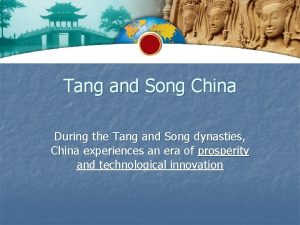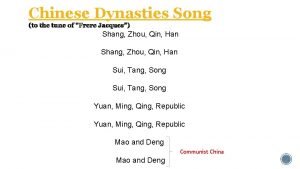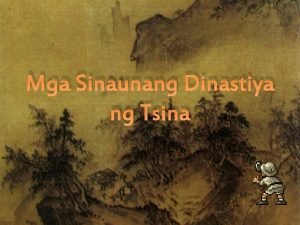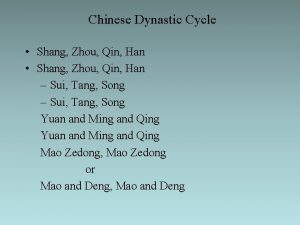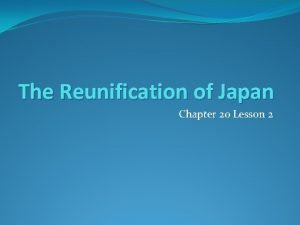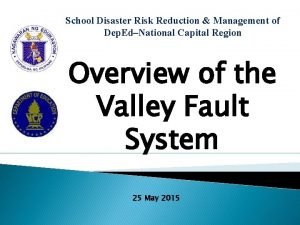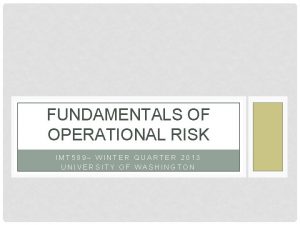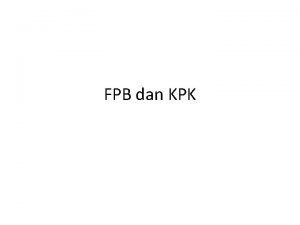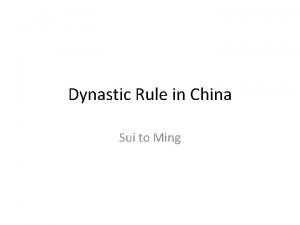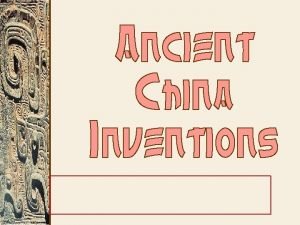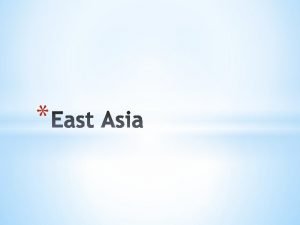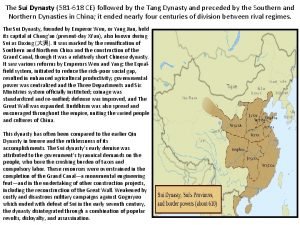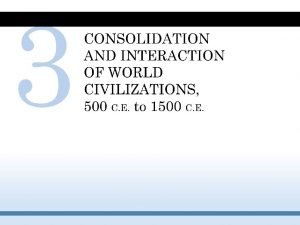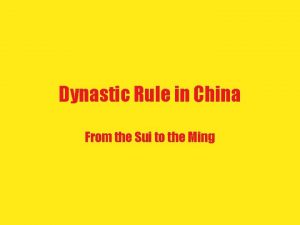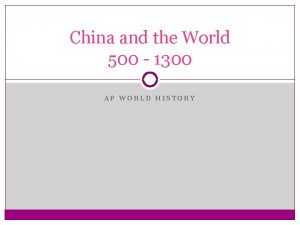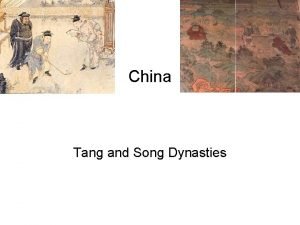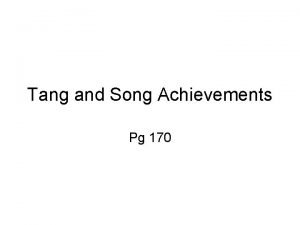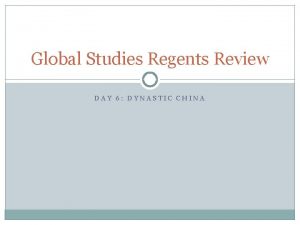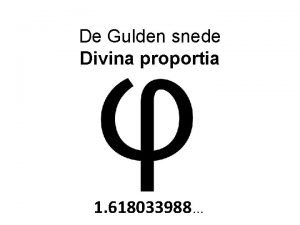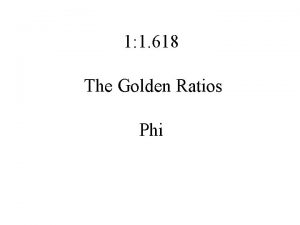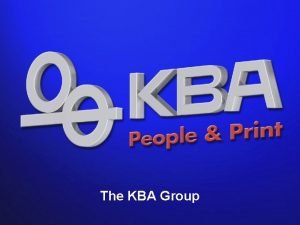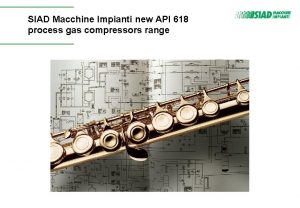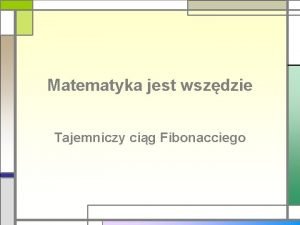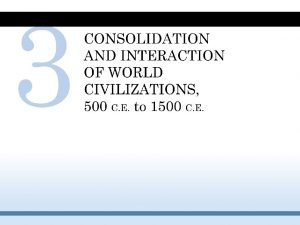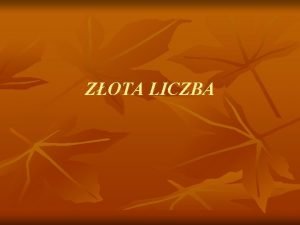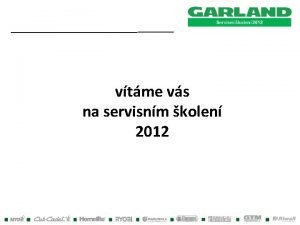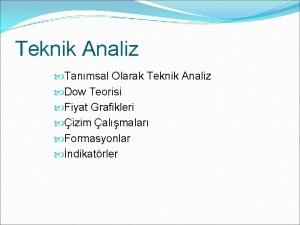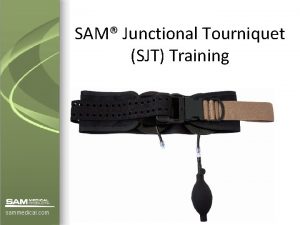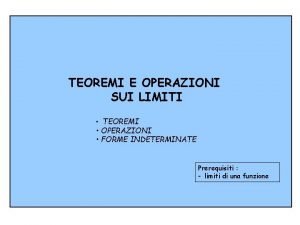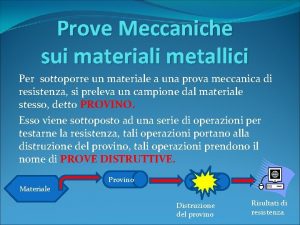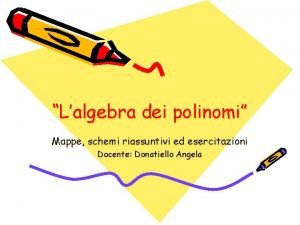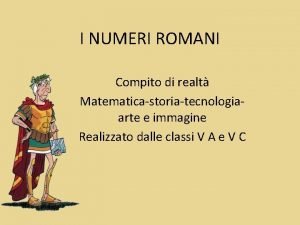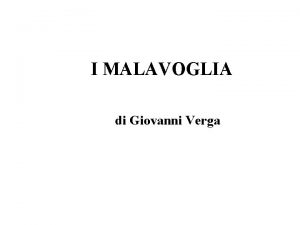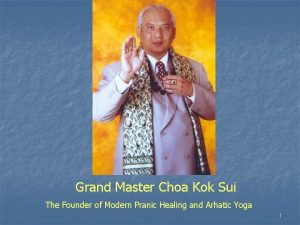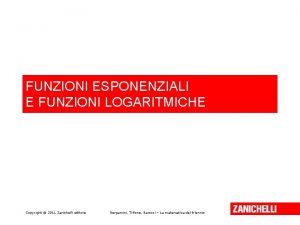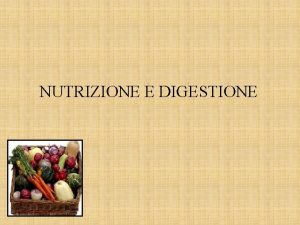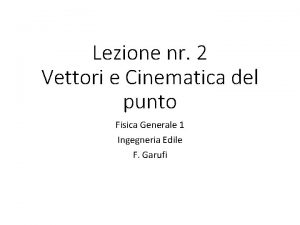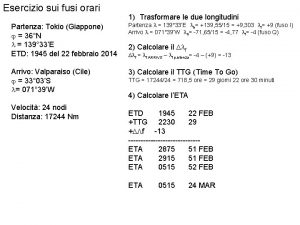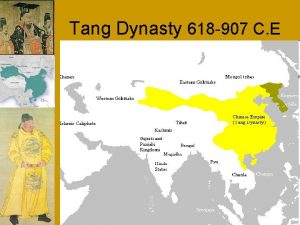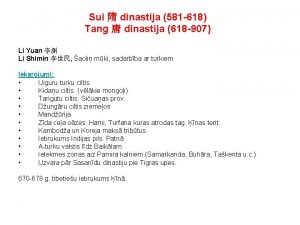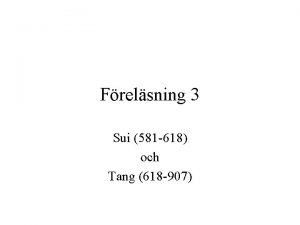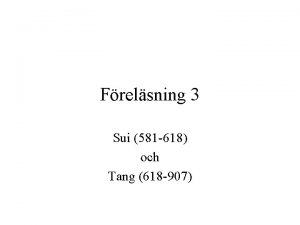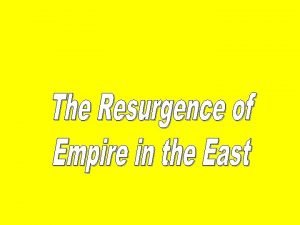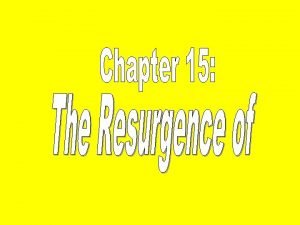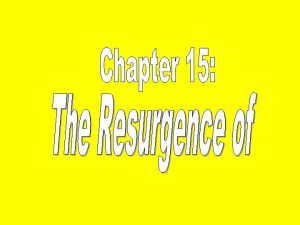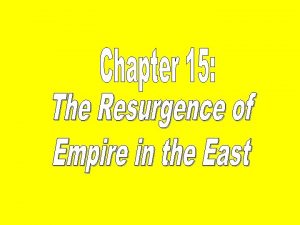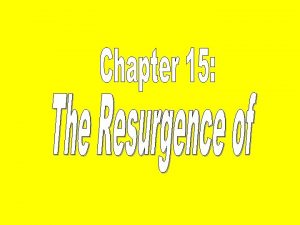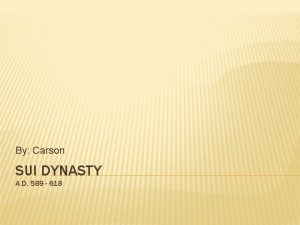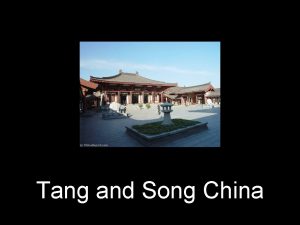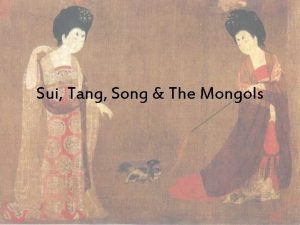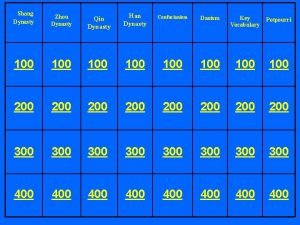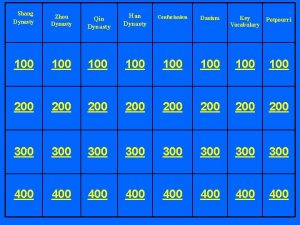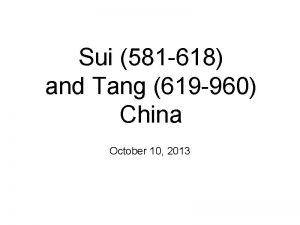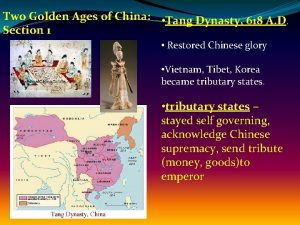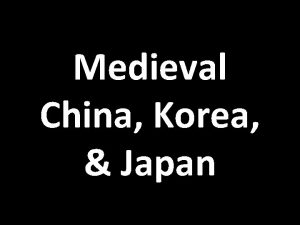Introduction Sui Dynasty 589 618 Reunification Tang Dynasty
































































- Slides: 64




Introduction Sui Dynasty 589 -618 Reunification Tang Dynasty 618 -907 High point in poetry Influenced Japan, Korea, Vietnam Song Dynasty 960 -1279 Most brilliant age in philosophy since Zhou Yuan Dynasty 1279 -1368 Empire Copyright © 2009 Pearson Education, Inc. , Upper Saddle River, NJ 07458. All rights reserved.

Move to Reunification After confusion of Six Dynasties period Push for re-creation of centralized bureaucratic empire modeled on earlier Han state First steps taken by Northern Wei 386 -534 Northern Sino-Turkic state Moved court to Luoyang Made Chinese the language of the court Adopted Chinese dress and surnames Imposed new land tax Copyright © 2009 Pearson Education, Inc. , Upper Saddle River, NJ 07458. All rights reserved.

Sui Dynasty 589 -618 Sui Wendi - d. 605 General of mixed Chinese-Turkish ancestry Unification and reestablishment of centralized bureaucratic government Great Wall rebuilt Grand Canal constructed Linked Yellow and Yangtze Rivers Similar to earlier Qin Short-lived military dynasties restored order Copyright © 2009 Pearson Education, Inc. , Upper Saddle River, NJ 07458. All rights reserved.

Tang Dynasty 618 -907 First Tang emperor - former Sui provincial governor Retook Sui capital and renamed it Chang’an Emperor reconciled conflicting sets of interests Bureaucratic government centralized under him Concessions to the aristocrats • • Tax system “Equal field system” Exemptions Aristocrats as high officials Copyright © 2009 Pearson Education, Inc. , Upper Saddle River, NJ 07458. All rights reserved.

Governmental Structure Organization under three organs Military Affairs - supervised armies Censorate - watchdog functions Council of State - met daily with emperor • Secretariat - drafted policies • Chancellery - reviewed policies • State Affairs - carried out policies s Six Ministries - core of central government Copyright © 2009 Pearson Education, Inc. , Upper Saddle River, NJ 07458. All rights reserved.


Empress Wu 626 -706 Originally concubine for the second emperor Became empress of third Tang emperor Poisoned or eliminated all rivals Regent for her son for seven years Deposed him and ruled as emperor herself Only woman in Chinese history to hold title Moved court to Luoyang Fervent Buddhist and built temples Scholars of the North Gate Copyright © 2009 Pearson Education, Inc. , Upper Saddle River, NJ 07458. All rights reserved.


Chang’an of Xuan-Zong - r. 713 -756 Reformed government finances Grand Canal repaired New census Splendor of Chang’an Population of one million Trading center Great walls enclosed thirty square miles Copyright © 2009 Pearson Education, Inc. , Upper Saddle River, NJ 07458. All rights reserved.


Tang Empire Territorial expansion and contraction Threats from Tibetans, Turks, Mongols Four tier policy to protect borders Sent armies if all else failed Alliances with nomads against nomads Border defense, including Great Wall Bring enemy into empire as tributary state • Significance of embassies • Access to Tang culture and technology Copyright © 2009 Pearson Education, Inc. , Upper Saddle River, NJ 07458. All rights reserved.


Rebellion and Decline Problems with Manchurians, Tibetans, Arabs An Lushan Rebellion Order restored with aid of Uighur Turks Land reform Equal field system eliminated Replaced with fixed quota on each province More wars Bandits and warlords Collapse in 907 Copyright © 2009 Pearson Education, Inc. , Upper Saddle River, NJ 07458. All rights reserved.

Tang Culture Cosmopolitan because of its openness Flow of Indian art and philosophies Widespread commercial contacts New religions - Nestorian Christianity, Zoroastrianism, Manichaeism, Judaism, Islam Central Asian music and musical instruments Golden age of Buddhism in China Spread of temples and monasteries Temples served as schools, inns, bathhouses Copyright © 2009 Pearson Education, Inc. , Upper Saddle River, NJ 07458. All rights reserved.



Buddhist Sects Tiantai sect was principal in early Tang Maitreya - a Buddha of the future Will appear and create a paradise on earth Amitabha - Lord of the Pure Land Salvation by reliance on Amitabha Chan (Zen in Japan) Buddha was a human teacher Enlightenment by each individual’s efforts Regimen of physical labor and meditation Copyright © 2009 Pearson Education, Inc. , Upper Saddle River, NJ 07458. All rights reserved.

Secular Scholarship Tang culture marked the reappearance of secular scholarship and letters Scholarly-bureaucratic complex emerged Expansive production of poetry Official history of the previous dynasty Compilation of dictionaries Commentaries on Confucian classics Ghost stories and tales of adventures Copyright © 2009 Pearson Education, Inc. , Upper Saddle River, NJ 07458. All rights reserved.


Li Bo - 701 -762 Un-Buddhist, Daoist? Swordsman and carouser “Bring on the Wine” “Drinking Alone in the Moonlight” Poetry is clear, powerful, passionate Sensitive to beauty Sense of fantasy Life is brief and universe is large Along with Du Fu - greatest poets Copyright © 2009 Pearson Education, Inc. , Upper Saddle River, NJ 07458. All rights reserved.


Du Fu - 712 -770 Un-Buddhist, Stoic in nature? Friend of Li Bo Life of hardship Failed metropolitan exams, poverty Captured by An Lushan rebels Poetry is less lyrical and more allusive than Li Bo More compassion for human suffering Humans are short-lived and nature endures Copyright © 2009 Pearson Education, Inc. , Upper Saddle River, NJ 07458. All rights reserved.

Song Dynasty 960 -1279 Reunified China in 960 Northern Song 960 -1127 • Capital at Kaifeng Southern Song 1127 -1279 • Capital at Hangzhou Continued changes begun in Tang era in economy, state, society and culture These changes help explain why China did not lapse into disunity after eventual collapse Copyright © 2009 Pearson Education, Inc. , Upper Saddle River, NJ 07458. All rights reserved.


Agricultural Revolution Aristocracy weakened Farmers could buy and sell land Taxes paid in money Conscription disappeared Changes in technology New early-ripening rice - double cropping Water control projects Tea, cotton Appearance of scholar-gentry class Copyright © 2009 Pearson Education, Inc. , Upper Saddle River, NJ 07458. All rights reserved.

Agriculture: Fast-ripening rice As Tang and Song armies ventured into Vietnam, they encountered fastripening rice Allowed two crops per year When introduced into the fertile fields of southern China, fast-ripening rice quickly expanded the food supply Chinese characters for “rice field”

New Agricultural Techniques Heavy iron plows Harnessed oxen and water buffaloes Enriched soil with manure and composted organic matter Extensive irrigation systems Reservoirs, dikes, dams, pumps, water wheels Artificial irrigation greatly increased agricultural production which led to a rapid population expansion

Commercial Revolution Song economy reached new prosperity Emergence of Yangzi basin New technology and innovations Coal and iron-smelting industry Printing Abacus, gunpowder, textiles, porcelains Letters of credit and paper money Trade Urbanization - Kaifeng, Hangzhou Copyright © 2009 Pearson Education, Inc. , Upper Saddle River, NJ 07458. All rights reserved.

Cities Increased food supplies encouraged the growth of cities During the Tang Dynasty, the imperial capital of Chang’an was the world’s most populous city Perhaps two million residents During the Song Dynasty, the capital of Hangzhou had over a million residents Southern terminus of the Grand Canal

Economic Exchange: Letters of Credit Trade grew so rapidly during the Tang and Song era that copper coin shortages developed Traders began issuing letters of credit (“flying cash”) as an alternative Enabled merchants to deposit goods or cash at one location and draw the equivalent cash or merchandise somewhere else Coin from Tang Dynasty

Economic Exchange: Paper Money • The search for alternatives to cash also led to the invention of paper money • During the late ninth century, wealthy merchants began accepting cash from their clients and issuing them printed notes that the clients could redeem for merchandise • Greatly facilitated commercial transactions

Economic Exchange: Tea trading flourished during Tang and Song era Tea was compressed into bricks and used as money

Specialization Increased urbanization brought a host of specialized activities to the cities Merchants, artisans, metallurgists, printers, chemists, craftsmen, textile workers, performers, restaurateurs, etc China’s various regions specialized in the cultivation of particular food crops and traded their own products for imports from other regions The government developed a specialized class of bureaucrats

New Technologies Song porcelain Cannon ca. 1368

New Technologies: Porcelain Tang craftsmen discovered how to produce porcelain which was lighter, thinner, and adaptable to more uses than earlier pottery Strong enough and attractive enough to serve utilitarian or aesthetic purposes Tang and Song products gained such a reputation that porcelain is commonly called “chinaware” Tang Marble Glazed Porcelain Figure

New Technologies: Printing Became common in Tang era Earliest printers used block-printing techniques Carved a reverse image of an entire page into a wooden block, inked the block, then pressed a sheet of paper on top of it By the mid-eleventh century, printers began to experiment with movable type Fashioned dies in the shape of ideographs, arranged them in a frame, inked them, and pressed the frame over paper sheets Speeded up the process and allowed printers to make revisions and corrections Facilitated production and distribution of texts quickly, cheaply, and in large quantities

I Impact of Movable Type Allowed large production and distribution of Buddhist texts Confucian works Calendars Agricultural treatises Popular works

New Technologies: Gunpowder During the Tang era, Daoist alchemists learned it was dangerous to mix charcoal, saltpeter, sulphur, and arsenic Military officials saw possibilities By the tenth-century, the Tang military was using gunpowder in bamboo “fire lances, ” a kind of flame thrower and by the eleventh century they had made primitive bombs


Song Government Age of autocracy Emperors had direct personal control over more offices than Tang predecessors Central government better funded • Monopolies on salt, wine, tea • Commerce as vital source of revenues Disappearance of the aristocracy • Officials were commoners • Mostly products of the examination system Copyright © 2009 Pearson Education, Inc. , Upper Saddle River, NJ 07458. All rights reserved.

Examination System 50% of officials selected by examinations Structure of examination process Regional to Metropolitan to Palace Nature of examinations Memorize Confucian classics Interpret selected passages Write in literary style Compose poems on given themes Propose solutions based on Confucianism Copyright © 2009 Pearson Education, Inc. , Upper Saddle River, NJ 07458. All rights reserved.

Social Hierarchy: Song Bureaucracy Song rulers mistrusted the military so they placed more emphasis on civil administration Scholar bureaucrats proved to have limited military expertise and Song was vulnerable to military aggression Song increased centralization and built an enormous bureaucracy Devoured China’s surplus production and strained the treasury Efforts to raise taxes led to two peasant rebellions Wang Anshi unsuccessfully attempted socioeconomic reforms during the Song era


Song Culture Preconditions for rich Song culture Rising economy, more schools, higher literacy, spread of printing More narrowly Chinese than Tang Song culture less aristocratic and Buddhist Greatest age in pottery and porcelains Great age in history Sima Guang 1019 -1086 Comprehensive Mirror for Aid in Government Copyright © 2009 Pearson Education, Inc. , Upper Saddle River, NJ 07458. All rights reserved.

Song Philosophy Second only to Zhou in philosophy Zhu Xi - 1130 -1200 Studied Confucianism, Buddhism, Daoism Joined Confucianism to certain Buddhist and native metaphysical elements Deepening its social and political ethics His Confucianism the standard for examinations Made religion or metaphysics serve philosophy “Great ultimate” and “quiet sitting” Copyright © 2009 Pearson Education, Inc. , Upper Saddle River, NJ 07458. All rights reserved.


Art and Writing • The ruling and elite classes of the Tang and Song Dynasties were major supporters of Chinese painting. – Sought elaborate and ornate art with political and educational significance – Stressed realism

Art and Writing • Eighth Century was a golden age in Chinese poetry • Du Fu (712 -770 A. D. ) is often considered China’s greatest poet • Other great poets of the Tang era were Wang Wei (699 – 761) and Li Bo (701 – 762) Passing the Night at Headquarters Clear autumn at headquarters, wu-tung trees cold beside the well; I spend the night alone in the river city, using up all of the candles. Sad bugle notes sound through the long night as I talk to myself; glorious moon hanging in mid -sky but who looks?

Song Poetry and Painting Poetry some of China’s best Su Dungpo - 1037 -1101 • Painter, calligrapher, wrote commentaries • Social control through morality Painting and calligraphy equally appreciated Varied types of painting Landscape was crowning achievement • Small human figures in vast natural universe • Vision of an inner reality Copyright © 2009 Pearson Education, Inc. , Upper Saddle River, NJ 07458. All rights reserved.



Rise of the Mongol Empire Mongols a nomadic people north of China Yurts, clans, shamans Extraordinary horsemen Temujin - 1167 -1227 Genghis Khan (Jenghiz or Chinggis) • United Mongol tribes • Reorganized military forces s Nomadic cavalry and compound bow s Pledges of personal loyalty Copyright © 2009 Pearson Education, Inc. , Upper Saddle River, NJ 07458. All rights reserved.

Mongol Expansion Great Khans in China Genghis Khan captured Beijing in 1227 Originally mainly interested in plunder New dynasty in 1271 - Yuan Southern China falls in 1279 Chagatai Khans in Central Asia Golden Horde in Russia Ilkhans in Persia Copyright © 2009 Pearson Education, Inc. , Upper Saddle River, NJ 07458. All rights reserved.



Yuan Dynasty 1271 -1368 Kublai Khan Grandson of Genghis Khan Moved capital from Karakorum to Beijing Founded Yuan dynasty in 1271 Mixture of cultural elements Chinese custom of hereditary succession Beijing - Cambulac - “the city of the khan” • Chinese segregated in adjoining walled city Summer palace at Shangdu (Xanadu) Copyright © 2009 Pearson Education, Inc. , Upper Saddle River, NJ 07458. All rights reserved.

Yuan Governmental Structure Civil administration highly centralized Move towards absolutism Military service a monopoly of Mongols Classification in appointing civil officials Highest - Mongols Second - Persians, Turks, other non-Chinese Third - northern Chinese Lowest - southern Chinese Mongols took an easier examination Copyright © 2009 Pearson Education, Inc. , Upper Saddle River, NJ 07458. All rights reserved.

Foreign Impact and Culture Diplomacy and trade brought contact Persia and Arab world especially important Arab communities in Gunagzhou Camel caravans carrying silk Printing, gunpowder spread to western Asia Marco Polo Served Kublai Khan as official, 1275 -1292 A Description of the World Increased European interest in geography Copyright © 2009 Pearson Education, Inc. , Upper Saddle River, NJ 07458. All rights reserved.

Religion and the Mongols Mongol toleration of religions Nestorian Christianity Mother of Kublai Khan was Nestorian Papal missions Tibetan Buddhism most favored Chinese Buddhism also flourished Islam made greatest gains Established in Central Asia and western China Confucianism regarded as religion Copyright © 2009 Pearson Education, Inc. , Upper Saddle River, NJ 07458. All rights reserved.


Decline of the Yuan Dynasty Rapid decline after Kublai Khan Different khanates separated by religion and culture Mongols thought Great Khans too Chinese viewed Yuan as foreign oppressors Heavy taxes Corrupt officials White Lotus and other rebellions Rise of warlords and eventual collapse Copyright © 2009 Pearson Education, Inc. , Upper Saddle River, NJ 07458. All rights reserved.
 Tang song menu
Tang song menu Han sui tang song
Han sui tang song Shang zhou qin han sui tang song
Shang zhou qin han sui tang song Dinastiyang sung tagalog
Dinastiyang sung tagalog Shang zhou qin han song
Shang zhou qin han song Sui tang song
Sui tang song Tang and song dynasty achievements
Tang and song dynasty achievements Song dynasty spice chart
Song dynasty spice chart Sui tang and song dynasties
Sui tang and song dynasties How did the sui and tang dynasties reunite china
How did the sui and tang dynasties reunite china Sui tang song
Sui tang song Lesson 2 the reunification of japan
Lesson 2 the reunification of japan Drrm family reunification plan
Drrm family reunification plan Raptor reunification
Raptor reunification Imt 589
Imt 589 Kpk 5 dan 6
Kpk 5 dan 6 Princess anle
Princess anle How did the sui dynasty affect daily life in china
How did the sui dynasty affect daily life in china Sui dynasty inventions
Sui dynasty inventions 618 ce
618 ce 618 ce
618 ce Sui dynasty philosophy
Sui dynasty philosophy How did the sui dynasty rise to power
How did the sui dynasty rise to power Hangzhou definition ap world history
Hangzhou definition ap world history Ming and qing dynasty venn diagram
Ming and qing dynasty venn diagram North south china
North south china Ming china spice chart
Ming china spice chart Song dynasty accomplishments
Song dynasty accomplishments The map shows that on his voyages, zheng he explored
The map shows that on his voyages, zheng he explored Gulden snede
Gulden snede 1 618
1 618 Honeywell x618
Honeywell x618 Sdah 618
Sdah 618 Kba compacta 618
Kba compacta 618 Siad macchine impianti
Siad macchine impianti Ciąg fibonacciego w przyrodzie
Ciąg fibonacciego w przyrodzie Song dynasty
Song dynasty The ruler of the land 618
The ruler of the land 618 1 618 liczba
1 618 liczba 618-04065a
618-04065a Zlatni pravougaonik
Zlatni pravougaonik Teknik analizde kullanılan formasyonlar
Teknik analizde kullanılan formasyonlar 618 ad
618 ad Sam junctional tourniquet axillary
Sam junctional tourniquet axillary 618 ce
618 ce 618 song
618 song Come collegare scienze ai diritti umani
Come collegare scienze ai diritti umani Teorema di unicità del limite
Teorema di unicità del limite Operazioni con infinito
Operazioni con infinito Prove meccaniche sui metalli
Prove meccaniche sui metalli Foto di pioggia sui vetri
Foto di pioggia sui vetri Potenze mappa concettuale
Potenze mappa concettuale La canzone dei diritti dei bambini
La canzone dei diritti dei bambini Compito di realtà sui romani
Compito di realtà sui romani Malavoglia temi
Malavoglia temi Master choa kok sui son
Master choa kok sui son Funzione logaritmica
Funzione logaritmica Macronutrienti e micronutrienti mappa concettuale
Macronutrienti e micronutrienti mappa concettuale Messi sui
Messi sui Hansel e gretel ei diritti dei bambini
Hansel e gretel ei diritti dei bambini Testo espositivo promessi sposi
Testo espositivo promessi sposi Le colpe dei padri ricadono sui figli tragedia greca
Le colpe dei padri ricadono sui figli tragedia greca Prodotto vettoriale triplo
Prodotto vettoriale triplo Esse est percipi
Esse est percipi Esercizi sui fusi orari
Esercizi sui fusi orari
